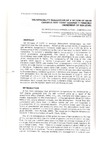Identificador persistente para citar o vincular este elemento:
https://accedacris.ulpgc.es/jspui/handle/10553/1012
| Campo DC | Valor | idioma |
|---|---|---|
| dc.contributor.author | Reuss Strenzel, Gil Marcelo | en_US |
| dc.contributor.author | Luque-Escalona, Angel | en_US |
| dc.contributor.other | Facultad de Ciencias del Mar | - |
| dc.contributor.other | Departamento de Biología | - |
| dc.date.accessioned | 2009-10-08T02:31:00Z | - |
| dc.date.accessioned | 2018-03-01T13:44:38Z | - |
| dc.date.available | 2018-03-01T13:44:38Z | - |
| dc.date.issued | 2005 | en_US |
| dc.identifier.other | 1787 | - |
| dc.identifier.uri | https://accedacris.ulpgc.es/handle/10553/1012 | - |
| dc.description.abstract | An increase of 0,5ºC in average atmosphere temperature has been registered over the last century. Based on the current levels of greenhouse gas emission, temperature increases could reach 1,5 to 4,5ºC by 2030. A consequence of this phenomenon is the rise of sea level, to which islands are vulnerable. To consider a possible marine transgression is fundamental for island ecosystems management. The island of Gran Canaria has a mountain west coast, but an alluvial plain dominates its east coast, where urban development is higher. The vulnerability if this area if the Gran Canaria coast against a marine transgression was evaluated. A digital elevation mode (DEM) was created from a topographic chart (1:5000) and used to simulate marine transgressions scenarios, based on projections found in literature. Probability charts were then created, where the probability of each DEM cell of being above or below a threshold was calculated according to Bayesian theory, considering errors in database and decision rule. There’s 60% probability that the sea will reach the benchmark of 1,13m, with an increment of 1,5m ± 1 in its level and the benchmark of 1,52 m with an increment of 1,9 ± 1,22m. The probability chart superimposed onto a soil occupation chart reveals that the most vulnerable areas, considering human occupation, are the Burrero Beach and Las Palmas Airport | en_US |
| dc.language | spa | en_US |
| dc.source | II Symposium of Islands Ecosystems, 5-9 October 2003, pp. 166-173 | en_US |
| dc.subject | Investigación | en_US |
| dc.subject.other | Mar | en_US |
| dc.subject.other | Nivel | en_US |
| dc.subject.other | Subida | en_US |
| dc.subject.other | Canarias | en_US |
| dc.title | Vulnerability evaluation of a sector of Gran Canaria east coast against a possible increment of sea level | en_US |
| dc.type | info:eu-repo/semantics/article | en_US |
| dc.type | Article | en_US |
| dc.contributor.authorscopusid | Facultad de Ciencias del Mar | - |
| dc.contributor.authorscopusid | Biología | - |
| dc.contributor.contentdm | Facultad de Ciencias del Mar | es |
| dc.contributor.contentdm | Biología | es |
| dc.identifier.absysnet | 337743 | - |
| dc.identifier.crisid | - | - |
| dc.rights.accessrights | info:eu-repo/semantics/openAccess | es |
| dc.type2 | Artículo | en_US |
| dc.identifier.external | - | - |
| dc.identifier.ulpgc | Sí | es |
| item.grantfulltext | open | - |
| item.fulltext | Con texto completo | - |
| Colección: | Artículos | |
Visitas
54
actualizado el 23-nov-2024
Descargas
203
actualizado el 23-nov-2024
Google ScholarTM
Verifica
Comparte
Exporta metadatos
Los elementos en ULPGC accedaCRIS están protegidos por derechos de autor con todos los derechos reservados, a menos que se indique lo contrario.
